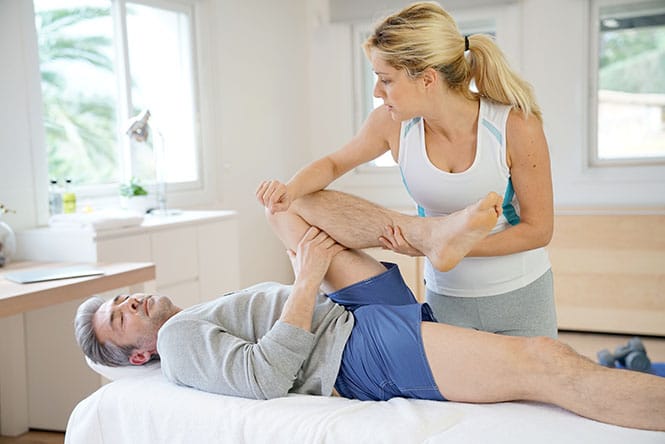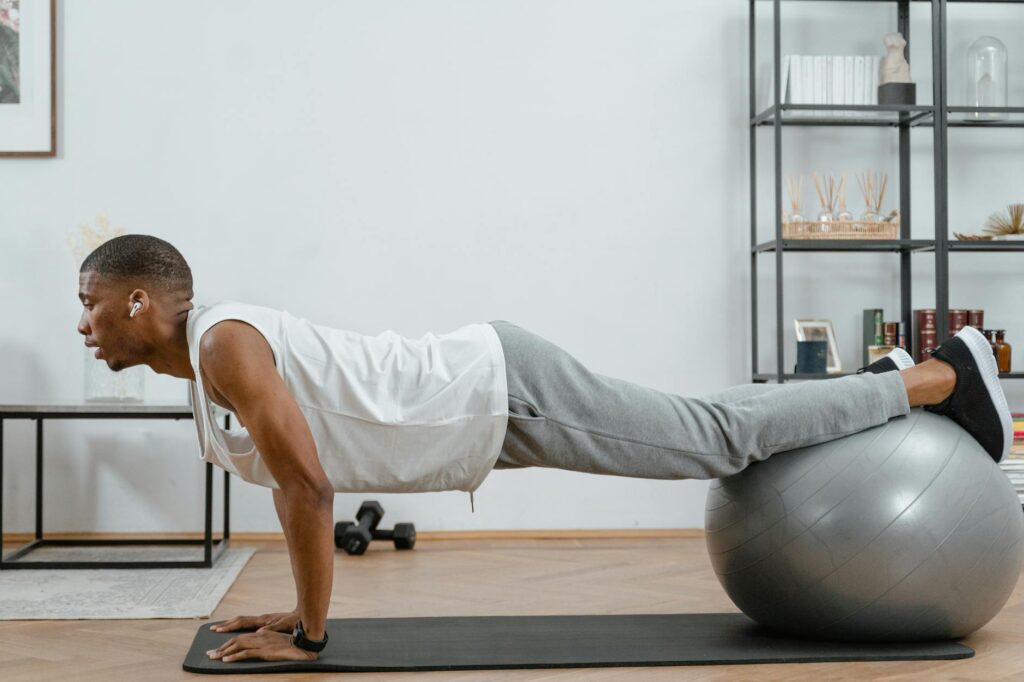Premature ejaculation (PE) is one of the most common sexual health concerns among men, affecting millions worldwide. It can lead to frustration, anxiety, and strain on relationships—yet many men feel uncomfortable seeking help or even talking about it. Among the various treatment options available, one simple, non-invasive method has been gaining attention: Kegel exercises.
Originally designed to help women strengthen their pelvic floor muscles after childbirth, Kegel exercises have since been found to offer surprising benefits for men as well—particularly when it comes to improving bladder control and sexual performance. But the question remains: Can Kegels really help men gain better control over ejaculation?
Recommended: Will Testosterone Therapy Help with Erectile Dysfunction?
In this blog, we’ll dive into what Kegel exercises are, how they might influence premature ejaculation, what the science says, and how to get started safely and effectively.
What Are Kegel Exercises?
Kegel exercises are simple, repetitive movements designed to strengthen the pelvic floor muscles—the muscles that support the bladder, bowel, and sexual organs. For men, these exercises focus on the pubococcygeus (PC) muscle, which plays a key role in urinary control and sexual function, including ejaculation.

The exercises were originally developed by Dr. Arnold Kegel in the 1940s to help women recover pelvic strength after childbirth. However, research and clinical experience have shown that men can also benefit from regularly practicing Kegels.
Kegel exercises involve contracting and relaxing the pelvic floor muscles, much like you would if you were trying to stop the flow of urine midstream. Over time, this strengthens the muscles involved in both bladder control and sexual response.
Because premature ejaculation often involves a lack of muscular or neurological control during arousal, strengthening the pelvic muscles through Kegels may give men more physical command over ejaculation, making them a natural option for addressing PE.
Understanding Premature Ejaculation (PE)
Premature ejaculation (PE) is a common male sexual health condition where ejaculation happens sooner than desired, often within a minute of penetration. It can lead to emotional distress, relationship difficulties, and reduced sexual satisfaction. PE is typically classified into two types: lifelong (present from the first sexual experience) and acquired (developing later in life). While lifelong PE is often linked to biological or neurological factors, acquired PE may be caused by stress, anxiety, relationship issues, or other health conditions.
Recommended: How to Fix Delayed Ejaculation from Antidepressants
The causes of PE are usually a mix of psychological, biological, and lifestyle factors. Though it’s not physically harmful, its impact on emotional well-being and confidence can be significant. Fortunately, a range of treatments is available—from behavioral techniques and therapy to medications and exercises like Kegels. Strengthening pelvic floor muscles through Kegel exercises has shown promise in helping some men improve control over ejaculation, making it a simple, drug-free option worth exploring.
What Causes PE?
Premature ejaculation (PE) doesn’t have a single cause—it often results from a combination of psychological, biological, and lifestyle factors. Understanding the underlying cause is key to choosing the most effective treatment.
1. Psychological Causes
- Performance anxiety: Worrying about sexual performance can create a mental “rush” to finish, leading to early ejaculation.
- Stress and relationship issues: Emotional tension, unresolved conflicts, or communication problems with a partner can contribute to PE.
- Past experiences or trauma: Early sexual conditioning or negative sexual experiences can create lasting patterns of quick climax.
2. Biological Causes
- Hormonal imbalances: Low levels of serotonin or dopamine can affect the ejaculatory reflex.
- Hypersensitivity: An overly sensitive penis or nerve pathways can trigger early ejaculation.
- Prostate issues: Conditions like prostatitis may play a role in acquired PE.
- Genetics: Some men may be more prone to PE due to inherited traits.
Recommended: Why Is My Penis Head Losing Sensitivity?
3. Lifestyle and Health Factors
- Poor physical health: Lack of exercise, obesity, or chronic conditions like diabetes may contribute.
- Erectile dysfunction (ED): Men with ED may rush to climax before losing an erection, reinforcing the cycle of PE.
- Substance use: Alcohol, recreational drugs, or even some medications can affect sexual timing and control.
PE is complex and personal—what triggers it for one person might not affect another. Fortunately, many of its causes are manageable, and targeted treatments, including behavioral strategies and pelvic floor training, can lead to significant improvement.
How Pelvic Floor Muscles Influence Ejaculation
The pelvic floor muscles, especially the pubococcygeus (PC) muscle, play a vital role in controlling ejaculation. These muscles contract rhythmically during orgasm to propel semen out of the body. Essentially, they act as the physical “gatekeepers” that regulate the timing and force of ejaculation.
When the pelvic floor muscles are strong and well-coordinated, men tend to have better control over these contractions, allowing them to delay ejaculation and improve sexual stamina. Conversely, weak or fatigued pelvic muscles may cause premature or involuntary ejaculation because they can’t maintain the necessary control to hold back the ejaculatory reflex.
Strengthening the pelvic floor through exercises like Kegels can help improve muscle tone and coordination, giving men more physical control during sexual activity, which is why these exercises are often recommended as part of premature ejaculation treatment plans.
Recommended: Why Do My Erections Disappear During Foreplay?
The Role of the Pelvic Floor Muscles in Ejaculation
The pelvic floor muscles, particularly the pubococcygeus (PC) muscle, play a crucial role in the male sexual response, especially during ejaculation. These muscles act like a supportive hammock across the bottom of the pelvis, holding up the bladder and bowel, and surrounding the urethra and the base of the penis. When you ejaculate, these muscles contract rhythmically to expel semen—essentially controlling the intensity and timing of ejaculation.

Strong, well-coordinated pelvic floor muscles help manage the buildup and release of sexual tension. On the other hand, weak or untrained pelvic muscles can lead to poor ejaculatory control, making it difficult to delay climax. By strengthening these muscles through targeted exercises like Kegels, men may gain better control over these contractions, allowing them to slow down or delay ejaculation. This muscular control is one of the key reasons why Kegel exercises are being explored as a natural remedy for premature ejaculation.
How to Do Kegel Exercises Correctly
Doing Kegel exercises properly is essential to see improvements in pelvic strength and ejaculatory control. Follow these simple steps:
Step 1: Identify the Right Muscles
- Try to stop the flow of urine midstream.
The muscles you use to do this are your pelvic floor muscles. - Alternatively, imagine you’re holding in gas—tighten those same muscles.
Step 2: Get Into a Comfortable Position
- Start by lying down or sitting comfortably.
- Relax your body, especially your stomach, thighs, and buttocks—only your pelvic floor should do the work.
Recommended: Natural Ways to Increase Testosterone for Better Male Vitality
Step 3: Perform the Basic Kegel Contraction
- Tighten the pelvic floor muscles.
- Hold the squeeze for 3 to 5 seconds.
- Relax fully for 3 to 5 seconds.
- Repeat 10–15 times per session.
Step 4: Build a Daily Routine
- Aim for 3 sessions a day (morning, afternoon, evening).
- Be consistent—results build over time with regular practice.
Step 5: Progress Slowly
As your muscles strengthen:
- Increase the hold time to up to 10 seconds.
- Add quick pulses (tighten and release rapidly) to improve control.
- Keep breathing normally—don’t hold your breath.
Step 6: Practice Anywhere, Anytime
Kegels are completely discreet. You can do them:
- While sitting at your desk
- Watching TV or reading
- During your commute or lying in bed
Common Mistakes to Avoid
Doing Kegel exercises incorrectly can limit their effectiveness or even cause discomfort. Here are some common mistakes to watch out for:
1. Using the Wrong Muscles
Many people accidentally tighten their abdomen, buttocks, or thigh muscles instead of the pelvic floor. Focus solely on the muscles around your genitals and anus.
2. Holding Your Breath

Breathing should remain steady and relaxed throughout the exercise. Holding your breath increases tension and reduces the exercise’s benefits.
Recommended: How to Manage Performance Anxiety for Improved Male Intimacy
3. Overdoing It
Doing too many Kegels at once or too frequently can strain or tire your pelvic muscles, leading to soreness or worsening control. Stick to recommended sets and rest days.
4. Inconsistent Practice
Kegels require regular, daily practice for at least 4 to 8 weeks to notice improvements. Skipping sessions slows progress.
5. Using Kegels to Stop Urine Flow Regularly
While useful to identify the muscles, stopping urine midstream repeatedly can cause urinary problems and is not recommended as an exercise method.
6. Expecting Immediate Results
Pelvic muscle strengthening takes time. Don’t get discouraged if you don’t see instant improvement—consistency and patience are key.
Conclusion
Kegel exercises offer a simple, non-invasive way for men to strengthen their pelvic floor muscles—an important factor in gaining better control over ejaculation. While they are not a guaranteed cure for premature ejaculation, many men have found that consistent practice helps improve muscle strength, delay climax, and boost confidence in the bedroom.
However, it’s important to approach Kegels with realistic expectations and proper technique. For best results, these exercises are often most effective when combined with other treatments like behavioral methods, counseling, or medical support. If premature ejaculation continues to impact your quality of life, consulting a healthcare professional can provide personalized guidance and additional treatment options. Overall, Kegel exercises are a valuable tool worth trying as part of a comprehensive approach to managing premature ejaculation.
